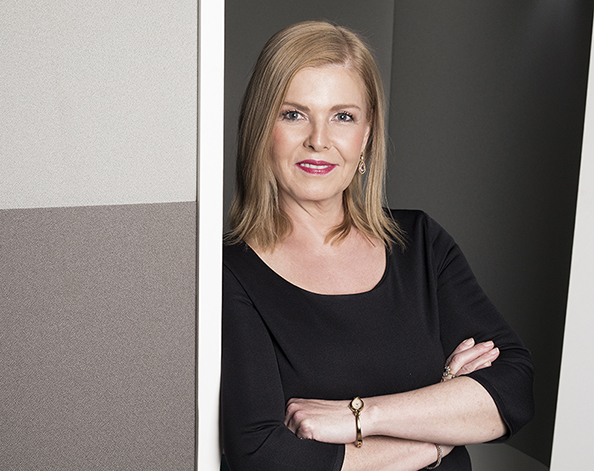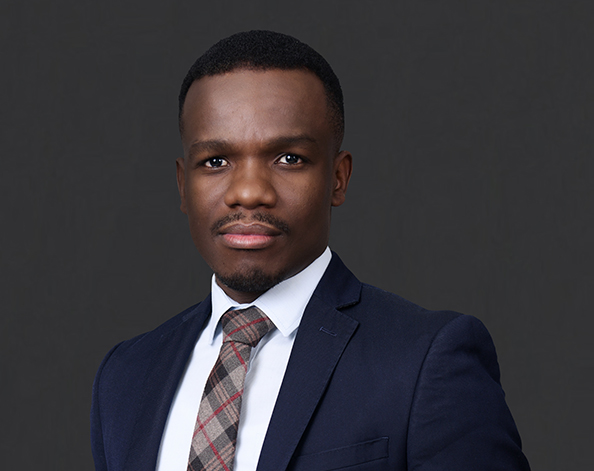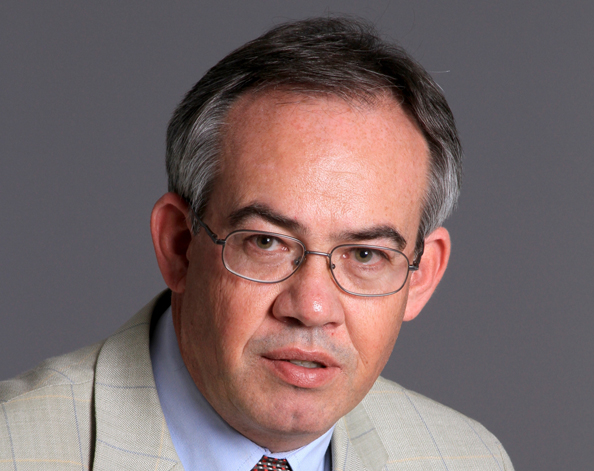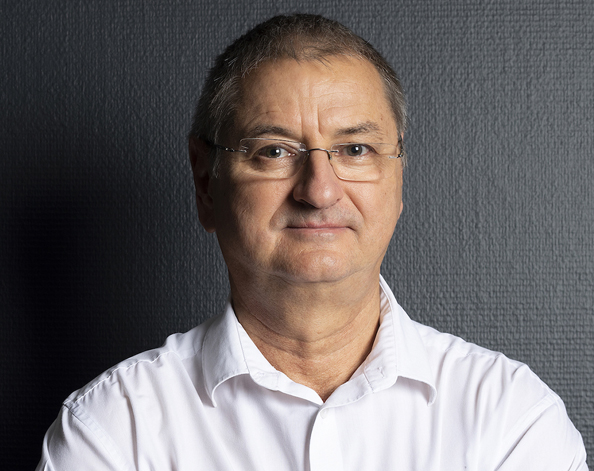Get Focus insights straight to your inbox
The New Year in the financial markets started on a note of elevated volatility. Omicron infection rates in many parts of the world surged and in the US, the Federal Reserve signalled that interest rates could be hiked earlier and at a faster pace than previously expected.
2022 looks set to be another eventful year for both the global and South African economies and consequently, for financial markets. The global economy is expected to remain supportive for the South African economy, expanding at an above-trend rate of 4.4% (6.6% in 2021). However, the impetus from a surge in commodity prices and an acceleration in global trade is slowing and threatens to reverse.
The US remains the primary engine of global growth, with consumer spending underpinned by high levels of savings and a strong labour market. A rebound in the Chinese economy in 2H 2022 is possible if easier policies are implemented after 2021’s policy-induced slowdown.
Chinese authorities have targeted the property sector, where speculative investment exposed highly indebted companies, and private businesses in the technology and education sectors.

Sign up to the Focus newsletter for regular insights from Investec experts.
Jump to the sections you're most interested in:
Global dynamics
We expect rising market volatility as strong liquidity tailwinds reverse
Monetary policy in the advanced economies will start to transition from very accommodative to more normalised levels, a shift deemed necessary in order to stabilise inflation over the medium term.
Bond purchasing programmes conducted by the Fed and the Bank of England are coming to an end, although the Bank of Japan and the European Central Bank (ECB) are highly likely to continue with non-conventional monetary policies in the short-to-medium term.
In the case of the ECB, the PEPP (Pandemic emergency purchase programme) is coming to an end but the APP (Asset purchase programme) seems likely to continue for a while.
Policy rates, currently at the zero-bound, will gradually be raised. A global withdrawal of liquidity could create a more volatile and challenging backdrop for emerging market capital flows and hence for the rand and South African interest rates, across the maturity spectrum.
We will monitor the following key dynamics for turning points:
- where inflation settles
- how aggressively the Fed hikes rates
- policy signals from the Chinese authorities.

A global withdrawal of liquidity could create a more volatile and challenging backdrop for emerging market capital flows and hence for the rand and South African interest rates, across the maturity spectrum.
Covid-19 remains a source of uncertainty
Covid: New strains of the Sars-Cov-2 virus continue to present high levels of uncertainty for global growth. But economic sensitivity to new waves and strains appears to be decreasing. Vaccinations in most parts of the world are rising, and new treatments are emerging.
While there is growing resistance in the Western world to new mobility restrictions to contain the spread of the virus, China is a notable exception. A China policy of zero tolerance for new cases keeps risks elevated for supply-chain challenges and bottlenecks. New restrictions have already been flagged ahead of the Winter Olympics, commencing on 4 February.
In South Africa, the government has adopted a more pragmatic approach. The strain on health care facilities will determine the level of further restrictions. The government is likely to consider unnecessary pressure on the local economy as a key factor in determining appropriate policy responses to potential Covid-19/ other virus flare-ups.
Where will inflation settle?
Inflation: High levels of uncertainty about inflationary trends look likely to persist in 2022. The base case is for global inflation to peak in 1Q 22 and, thanks to favourable base effects, for an “orderly” return to normal levels in 2H 22.
The deceleration of commodity price increases in 2022 compared to 2021 will help moderate headline CPI inflation trends.
There are tentative indications that supply-chain disruptions, which have created shortages/production bottlenecks in goods (eg. semi-conductors, homebuilding goods) and labour (eg. truck drivers and port workers), could be moderating.
US inflation has accelerated to a 30-year high of 6.8% and producer inflation to a 40-year high of 9.8%. Companies have started to pass on higher input costs, and wage inflation, especially in the US, has accelerated.
The underlying inflation trend, measured by core CPI, could rise in contrast to a levelling off in headline inflation. Additionally, global food prices could remain elevated, because of the impact of La Niña and climate change on crop yields. the effects of La Nina and climate changes on crop yields.
Oil outlook important for inflation (By Herbert Kharivhe)
WTI and Brent crude oil prices rallied 50% and 55% respectively in 2021, on OPEC+ supply discipline and demand recovery as world economies reduced Covid-related lockdowns. Brent crude is currently hovering around the US$79 to US$80/bbl range.
Oil prices have recovered from the Omicron-related slump in late 2021. Our forecast is unchanged from our intra-quarter update in October 2021. We forecast Brent crude to average US$77/bbl in 2022 (H1, US$79/bbl and H2, US$75/bbl) and US$72/bbl in 2023.
Bloomberg consensus forecasts Brent crude to average US$74/bbl in 2022. Oil demand continues to recover despite Omicron. Demand is expected to return to pre-pandemic levels by the end of 2022.
OPEC forecasts a surplus of 0.84 million barrels per day (mbpd) in 2022, with the EIA forecasting 0.48mbpd and the IEA forecasting 2.08mbpd. All three organisations forecast increasing demand.

Public producers remain reluctant to boost output, weighing materially on U.S. oil production growth.
Supply remains constrained by OPEC+ discipline and US shale capital discipline. The OPEC+ production compliance has been greater than 100% in the past nine months. We question if this highlights reluctance to bring more volumes to market or highlights the lack of investment in the industry, which peaked in 2014. Further, we flag the expected decline in production volumes from Libya due to unrest (+/-550 kbpd).
OPEC has decided to stay the course and add 400kbpd in February 2022. OPEC maintains that the market may be oversupplied towards the end of 2022 and therefore may decide to pause or reverse output hikes in 2022.
Oil prices are above breakeven for all major US oil plays, and drilling for oil remains an attractive proposition. The numbers of oil rigs has increased in recent months but remain well below pre-pandemic levels.
Public producers remain reluctant to boost output, weighing materially on US oil production growth. Well below pandemic levels.
Whither the US dollar and the ZAR?
The US dollar is likely to remain on the front-foot owing to higher growth differentials with the rest of the world, in our view. A more hawkish US Federal Reserve would help this view, as real interest rate differentials become more appealing.
The implication is that emerging market currencies such as the ZAR will find sustained appreciation difficult as foreign portfolio inflows are likely to remain sidelined if the resilient USD view plays out.
However, the surplus on the merchandise trade account will continue to provide a buffer to the ZAR during 1H 2022. However, import demand is expected to be stronger relative to 2021 as low inventory levels are replenished and fixed investment accelerates off its eroded base.
A lower terms of trade compared with 2021 could translate into a deficit on the current account. We forecast a reversal from an estimated surplus of 3.7% of GDP in 2021 to a deficit of 0.5% in 2022.
A growth rebound in the Chinese economy remains essential for a scenario of a sustainable rebound in emerging market currencies and stronger investor conviction on the direction and pace of US Fed funds rate moves.
Our forecast trading range for USD ZAR in 2022 is R16.20/$ to R15.00/$ (averaging R15.40/$). The key drivers for a stronger rand is a slightly weaker USD with growth in the rest of world improving.
The risk to a weaker rand is upside surprises to US inflation which lead to greater front loading of rate hikes. Other risks include global liquidity dynamics and local factors such as the ANC’s elective conference in December. The outcome is important as the selection of the ANC’s Top 6 is likely to affect the political narrative for SA for the next five years.
Global risks and threats for 2022
- Covid-19 variant trends and infection waves.
- Ongoing supply shortages and increased delivery times. A positive surprise would emanate from an oversupply of goods, leading to a faster inflation slowdown and a more gradual rate hiking cycle.
- Higher inflation or the threat of stagflation.
- Central Bank policy mistakes - acting too slowly or too aggressively.
- Elevated oil prices - $100/barrel?
- Elections in Hungary, Italy, and France and implications for the Eurozone and ECB policy.
- Geopolitical risks: China/Taiwan conflict and Russia invading Ukraine.
South Africa: The year of taking the tiger by the horns?
With apologies to the bull in the Chinese year of the tiger
Economic reform agenda, unemployment and politics
The implementation of President Cyril Ramaphosa’s growth reforms remains pivotal to accelerate the growth trajectory and restore business and consumer confidence.
The ANC faces an elective conference in December 2022, with an internal revival, potential consequences of the Zondo commission report on state capture and key positions such as Secretary-General and Deputy President under scrutiny (refer to Professor Dirk Kotze’s section on Political anticipation for 2022 below).
ANC infighting has stalled Ramaphosa’s reform agenda. Industrial action is likely to continue to hamper business confidence. The number of workdays lost through strikes increased to 50 000 during the first nine months of 2021, which excludes the three-week long strikes in the metals and engineer sector.
The high level of unemployment, which increased to 34.9% in 3Q 2021 from 29.1% in 2019, and a catastrophic level of youth unemployment, at 74%, need to be prioritised.
The unemployment situation is fast becoming a structural problem, which is increasingly difficult to effectively control or solve for. The solution needs to go well beyond an extension of the social relief of distress grants. A revamp of the social safety net is required as families can currently benefit from more than one of the programmes and a more integrated and pragmatic approach to link skills and temporary jobs with social grants, is required.
GDP growth to return marginally above pre-COVID-19 levels
The economy is forecast to grow by 1.9% in 2022 compared to an estimated 4.7% and -6.4% in 2021 and 2020, respectively. This is marginally higher than the five-year average growth rate of 1.2% (preceding the Covid-19 pandemic). The key positive growth drivers will remain household spending and exports but the contribution to growth is likely to be less than in 2021. A growth rate of this magnitude implies that real output could remain ~0.5ppt below pre-Covid levels.
Loadshedding will not go away
2022 will be another year characterised by high levels of load shedding. This follows the more than 80 days of load shedding, varying between Stages 1 to 4, experienced in 2021 (see Dieter Matzner’s section on electricity dynamics).
Investment in renewable energy programmes has however started to translate into a moderate increase in credit extension. Another area that could see incremental progress is the partial privatisation of harbour infrastructure, with the intention to attract R100bn of investment.
Investment in bulk water infrastructure and desalination plants needs to accelerate, and water resources management needs to improve. The auctioning of high demand spectrum, rescheduled for March 2022, has again been challenged by Telkom. This issue remains pivotal to lower data costs and to accelerate the development of the digital economy. Read more on opportunities in infrastructure here.
A more pragmatic approach to Covid-19 variants, which led to a frustrating stop-go of momentum in 2021, could ease constraints on 2022’s economic recovery.
Rebuilding following the July riots in KZN and parts of Gauteng, which incurred an estimated R50bn of damages, could provide further tailwinds to growth.
SARB to deliver more rate hikes but at a gradual pace
The mix of monetary and fiscal policy, both of which have been supportive of the economy since the start of the Covid-19 pandemic in 2020, is gradually changing in 2022. Whereas monetary policy has entered a gradual normalisation phase, fiscal policy is likely to remain more expansionary.
The Reserve Bank had been able to delay the normalisation of interest rates, after aggressive rate cuts of 300bps in 2020, lowering the repo rate to 3.5%.
Unlike other emerging market central banks such as Brazil, Russia, Mexico and others, which were compelled by an acceleration in inflation earlier in 2021 to raise interest rates, inflation has been relatively well contained in South Africa.
With the US Federal Reserve and other G10 countries starting to remove Covid-19 monetary policy accommodation and South Africa’s real policy rate (adjusted for current and 12-month forward headline CPI inflation) in negative territory, a gradual rate hiking cycle will continue in 2022 and 2023.
CPI inflation is forecast to average 4.9% in 2022 compared to 4.4% in 2021, peaking at an average rate of 5.5% in 1Q 2022, before moderating to 4.4% in 4Q 2022 (and 4.2% in December 2022). This, however, is mainly because of the base effects of higher fuel prices in 2H 2021.
The earlier start to the Fed’s rate hiking cycle and the rand’s vulnerability to external factors could see the SARB raise the repo rate by a total of 100bps (one percentage point) in 2022 with a further 75/100bps 2023.
Risks to the inflation forecast are a weaker rand, oil prices at $100/barrel (refer Herbert Kharivhe’s view on the oil price), another steep increase in electricity tariffs (the Nersa announcement is due at the end of February) and rising unit labour costs.
Fiscal policy to remain countercyclical, funded from higher revenue receipts
Fiscal policy is expected to be more stimulatory and fiscal consolidation over the medium term could progress at a slower pace than that set out in the November 2021 Medium Term Budget Policy Statement (MTBPS).
Tax revenues for F21/22 could exceed the November 2021 MTBPS forecast by a further R40bn, on top of the then estimated R120bn.
With spending pressure intensifying on National Treasury from many areas such as cash-strapped SOEs, potential scrapping of e-tolls, an extension of the social relief grant, the public sector wage bill and Sasria, current spending is likely to continue to increase relative to infrastructure spending or debt reduction.
However, the more-significant-than-expected revenue windfall implies that taxes and bond supply are unlikely to be significantly raised to finance the expected increase in spending.
The risk of adverse sovereign rating risk announcements has receded, but any positive changes to the current outlook (Moody’s, Ba2 negative and S&P BB- stable) is likely to be contingent on the strength and durability of economic growth.
Political anticipation for 2022 (by Professor Dirk Kotze)
Zondo Commission reports provide a higher status to previous state capture information
The Zondo Commission reports brought an end to the waitand-see stance of government (and the ANC). The criminal justice system will now have reports that provide a higher (quasi-judicial) status to the information that were unearthed by the media, NGOs and other private institutions.
State capture information/evidence now enjoys a higher and more credible/ formal status. Those implicated, many of them Zuma or RET associates, are therefore now on the back foot.
This strengthens the Ramaphosa group in general, irrespective of whether highprofile arrests will follow. The Zondo Commission has been a ‘truth commission’ on corruption and state capture in South Africa, and its reputation will grow in future. It will become one of the main Ramaphosa era ‘successes’.

State capture information/evidence now enjoys a higher and more credible/ formal status. Those implicated, many of them Zuma or RET associates, are therefore now on the back foot.
A watershed year for the ANC
2022 is a critical year for the ANC. The two conferences will be similar to ‘mid-term’ conferences (similar to ones in 2002 - Stellenbosch and 2012 - Mangaung). Both were less contentious than the other conferences, and the ANC presidents were re-elected without much effort. 2022 is expected to be an resumption of this pattern.
More significant will be the positions of Deputy President and Secretary General. Jessie Duarte, the Deputy Secretary General, will also retire. It is predictable that one of the ‘Top Six’ will have to come from KZN – at the moment the province has no representation in this group.
Sihle Zikalala might be moved in that direction. Paul Mashatile is also a contender for more senior positions. The younger generation (Ronald Lamola and others), should also be watched.
ANC agenda
Radical policy changes are not anticipated. The land issue, in the form of a new Expropriation Act (based on the current formulation of Sec. 25) and not an amended constitution, will continue to be debated.
The ANC’s stance on land reform, as articulated during the parliamentary committee work on a constitutional amendment, will continue to be its official policy stance.
The social network in the form of minimum wages, social grants and adjustment to relief measures, will also be prioritised while job numbers are not increasing.
The Ramaphosa agenda for economic recovery and growth will largely continue. The search for more effective ways to implement the policies might receive more attention.
In terms of policy, it is therefore also a ‘midterm’ approach, doing the work of the aborted National General Council conference, instead of initiating new policies. These conferences will be dominated by organisational matters, how to rescue the ANC, and how organisational transformation could be more effectively achieved. It provides more opportunities for the Ramaphosa incumbents to dictate the process than for the Zuma/RET supporters who are no longer in key party positions.
The provincial executives will play a critical role in this process. (Note that the PECs in the Western Cape, Free State and North West are in limbo, while the Mpumalanga situation since 2017 is also unresolved – the Premier League therefore does not exist anymore).
Over the past number of years, the ANC has suffered most at local government level. The new administrations, many of them coalition governments without the ANC, will in 2022 show the public whether this new dispensation can make a difference.
In Tshwane it will be a more stable situation; in Johannesburg and Ekurhuleni it will depend on the EFF’s cooperation, and in eThekwini a new coalition style of government will have to be developed. It is therefore a test period for many councils, but the anticipation in general is that these administrations will function better than the previous ones, and with fewer interruptions.
In general, 2022 is not a year of ‘wait-and-see’ for the Ramaphosa leadership, but rather a year of taking more initiative. The Zondo report has created increased opportunities, the Zuma influence is in decline, the pandemic is better managed and Ramaphosa’s less ideological approach creates a more flexible situation.
The electricity challenge (Dieter Matzner)
Load shedding on the scale of 2021, or worse, will continue for at least the next two years until well into 2024. While progress has been made with Bid Window 5, many of the projects will only become operational in 2024. The main challenges that could continue to constrain the supply of electricity are the following:
Eskom’s reliability maintenance programme still require a further two years to be substantially completed. The repair of the Medupi unit 4 failed turbo generator set, which was severely damaged during a recent hydrogen explosion, will also have to be done over the next two years.
The delayed 2000 MW procurement emergency power programme (RMIPPP) will hopefully reach financial close by end of January/February 2022, depending on the results of the court process, which was initiated by DNG Energy, as well as uncertainty about the long-term harbour site leases (Coega, Saldanha Bay and Richards Bay). If these approvals are not forthcoming, then only 800 MW of the originally intended 2000 MW procurement programme will achieve commercial operation within 24 months after financial close i.e., around January 2024.

Load shedding on the scale of 2021, or worse, will continue for at least the next two years until well into 2024.
Bid Window 5 (BW5) projects of the REIPPPP are expected to reach financial close by end of April 2022. Collectively, 1800 MW of wind and 1000 MW of solar PV projects have been awarded. If financial close is achieved by April 2022, all these projects should be operational by mid-2024.
The Koeberg nuclear power plant lifetime extension programme will start with its implementation to replace three steam generators in January 2022. This implies that 930 MW of power supply in the Western Cape will be out of service for the next two years.
The procurement of BW6 for additional wind and solar power is expected to be launched some time in mid-2022, but its implementation is at least three to four years away. Similarly, any procurement process for the 3000 MW gas-fired mid-merit programme will take at least five to six years before being able to contribute to the national electricity supply.
The 100 MW programme for commercial and industrial users to implement without the need for generation licenses will take at least two to three years before any significant amounts of MWs are connected to the grid.
Several larger intensive energy users have started their procurement programmes and few awards have been made or are in the process of being made. Projects with Eskom grid connections for feed-in and take-off are likely to be realised first. However, many open regulatory questions remain with respect to the wheeling tariffs/energy charges.
Upgrading the grid system
The unbundling of Eskom into three separate independent companies, those being a Transmission Co., Distribution Co. and Generation Co. is to move the power sector towards a more commercial merchant market over time.
An immediate question however is that the Eskom Transmission and Distribution Cos. will have to spend some R200 billion over the next five to seven years to upgrade the grid system to allow additional capacity to be connected.
Priority should be given to those provinces where excellent renewable energy resources such as wind and solar are available and many ready-for-implementation projects are located.




